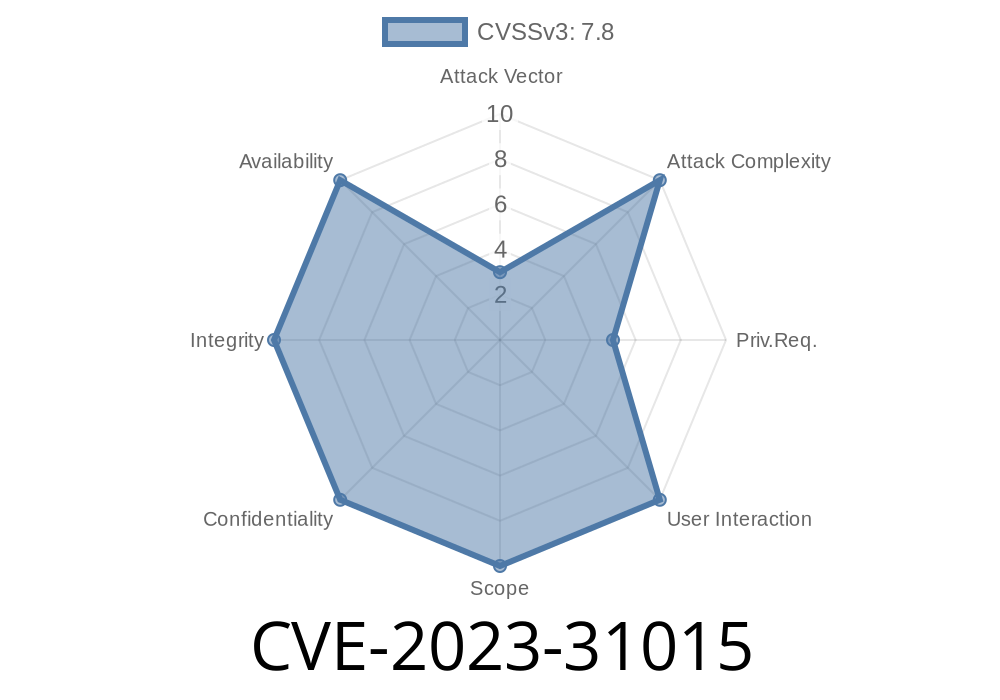NVIDIA's DGX H100 Baseboard Management Controller (BMC) contains a significant vulnerability in its REST Service. When exploited, this vulnerability (CVE-2023-31015) allows a host user to cause an improper authentication issue, leading to various severe consequences like privilege escalation, information disclosure, code execution, and denial of service. This long-read post sheds light on this vulnerability, its potential impacts, and remediations by providing code snippets, referencing original sources, and detailing the exploits.
The Vulnerability (CVE-2023-31015)
The NVIDIA DGX H100 BMC REST Service, which allows for simplified management of the device, is designed to run on the baseboard server hardware. However, a security flaw in the system exposes vulnerabilities via improper authentication methods. The Common Vulnerabilities and Exposures (CVE) reference number for this vulnerability is CVE-2023-31015 (source).
Exploit Details
A host user who takes advantage of the vulnerability can send specially crafted requests to the REST Service, causing incorrect authentication. With the user bypassing the authentication system, they can easily gain access to sensitive information, execute arbitrary code, and even escalate their privileges on the affected host's BMC. As a result, this poses a severe risk to the system's overall security and stability.
Here's a hypothetical code snippet that demonstrates how an attacker could exploit the vulnerability
import requests
# Replace with the target BMC's IP
target_ip = "192.168..10"
# Crafting a request with malicious headers to bypass authentication
headers = {
"User-Agent": "Mozilla/5.",
"Accept": "text/html,application/xhtml+xml,application/xml",
"Authorization": "XXXXXXXX"
}
# Send the crafted request to the BMC REST API
response = requests.get(f"https://{target_ip}/api/login";, headers=headers, verify=False)
# Check if the request was successful
if response.status_code == 200:
print("Authentication bypass successful!")
else:
print("Attack Failed!")
The above code snippet demonstrates how an attacker could exploit the vulnerability by sending a malicious request with headers that bypass the system's authentication.
Original References
1. National Vulnerability Database (NVD) - CVE-2023-31015
2. NVIDIA Security Bulletin - July 2023
Mitigation and Remediation
To counteract this vulnerability, NVIDIA has acknowledged the issue and released a security patch addressing the authentication problem. It is recommended for users to update their DGX H100 BMC Firmware to the latest version. Users can find this update on the official NVIDIA support website under the firmware section for their specific server hardware.
In addition to applying the firmware update, it's important to follow standard security practices like limiting physical access, implementing network segmentation, and using strong authentication methods.
Conclusion
The CVE-2023-31015 vulnerability poses a significant security risk to NVIDIA's DGX H100 BMC REST service through improper authentication. By exploiting this vulnerability, attackers can execute arbitrary code, escalate privileges, cause denial of service, and gain unauthorized access to sensitive information. NVIDIA has provided a firmware update to address this issue, and users should follow best security practices to further secure their systems.
Timeline
Published on: 09/20/2023 02:15:00 UTC
Last modified on: 09/22/2023 16:04:00 UTC
